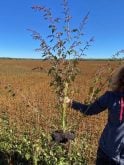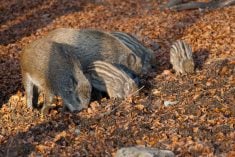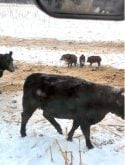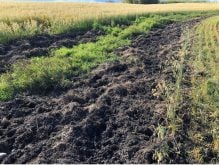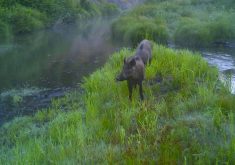Infestations of waterhemp have been found in the RMs of Stuartburn and La Broquerie in southeastern Manitoba, bringing the known infestations to 10.
MARD reported the new infestations earlier this month and urged farmers to keep an eye out for the noxious plant.
“If it’s not under control, this could be our No. 1 weed in a very short time,” said Kim Brown-Livingston, the provincial weed specialist.
“We’ve seen it spread across South Dakota, North Dakota,” she added. “It’s been found in every county in North Dakota. So, you know, it’s not a surprise that we’re finding it here.
Read Also

The joys of fishing from shore
Manitoba has many lake and river shorelines to drop a fishing line without the cost of a boat, making shore fishing more accessible, and anglers can still catch impressive fish.
“We just have to be really diligent on looking for it and eradicating it.”
Waterhemp is a Tier 1 noxious weed and must be destroyed if found, as per the Noxious Weeds Act. It’s extremely invasive on cropland, particularly among row crops like soybeans, corn and sunflowers, said Brown-Livingston.
“It can cause tremendous yield losses in corn and soybeans and sunflowers,” she said.
Waterhemp was first found in Manitoba in 2019. The plants can each produce thousands of tiny, black seeds, MARD wrote in its Aug. 18 pest report.
A past infestation doesn’t mean waterhemp is still in that location but seeds may still be in the soil so those areas need to be monitored, Brown-Livingston said.
Waterhemp has been known to be resistant to herbicide groups 2, 3, 4, 5, 9, 14, 15 and 27. Previous populations in Manitoba have been found to resist groups 2 and 9 herbicides. The plants found in Stuartburn were confirmed to be resistant to groups 9 and 14.
That’s not a surprise, said Brown-Livingston.
“There’s just lots of variable populations of waterhemp, and most of them are going to be showing up. Whatever shows up in Manitoba will have some level of herbicide resistance there, we’re assuming,” she said.
Waterhemp and its also-noxious relative, Palmer amaranth, can develop herbicide resistance in as few as three cycles, Brown-Livingston said. This is why it’s important to mix up groups when layering herbicides.
Brown-Livingston urged farmers to keep their eyes peeled for the weeds. They can grow quite tall and have often been detected because they tower above soybean fields.
“If you see something sticking up above a soybean field, you should be checking it,” she said.
If farmers find weeds they suspect to be waterhemp, they should contact Brown-Livingston, or their local weed supervisor or inspector, speak to their agronomist, or send samples for DNA analysis to PSI lab in Winnipeg.
Manitoba Canola Growers Association members have access to unlimited testing at PSI lab, Brown-Livingston added.








